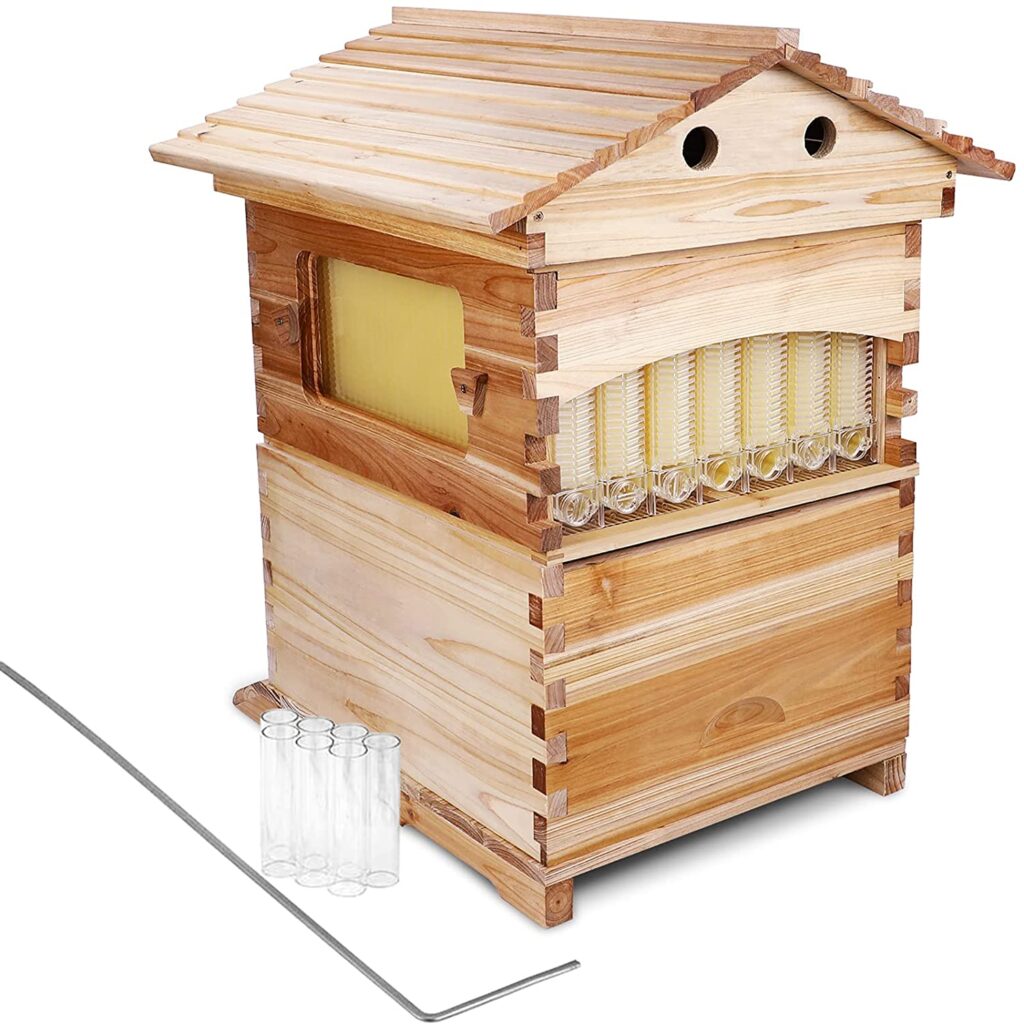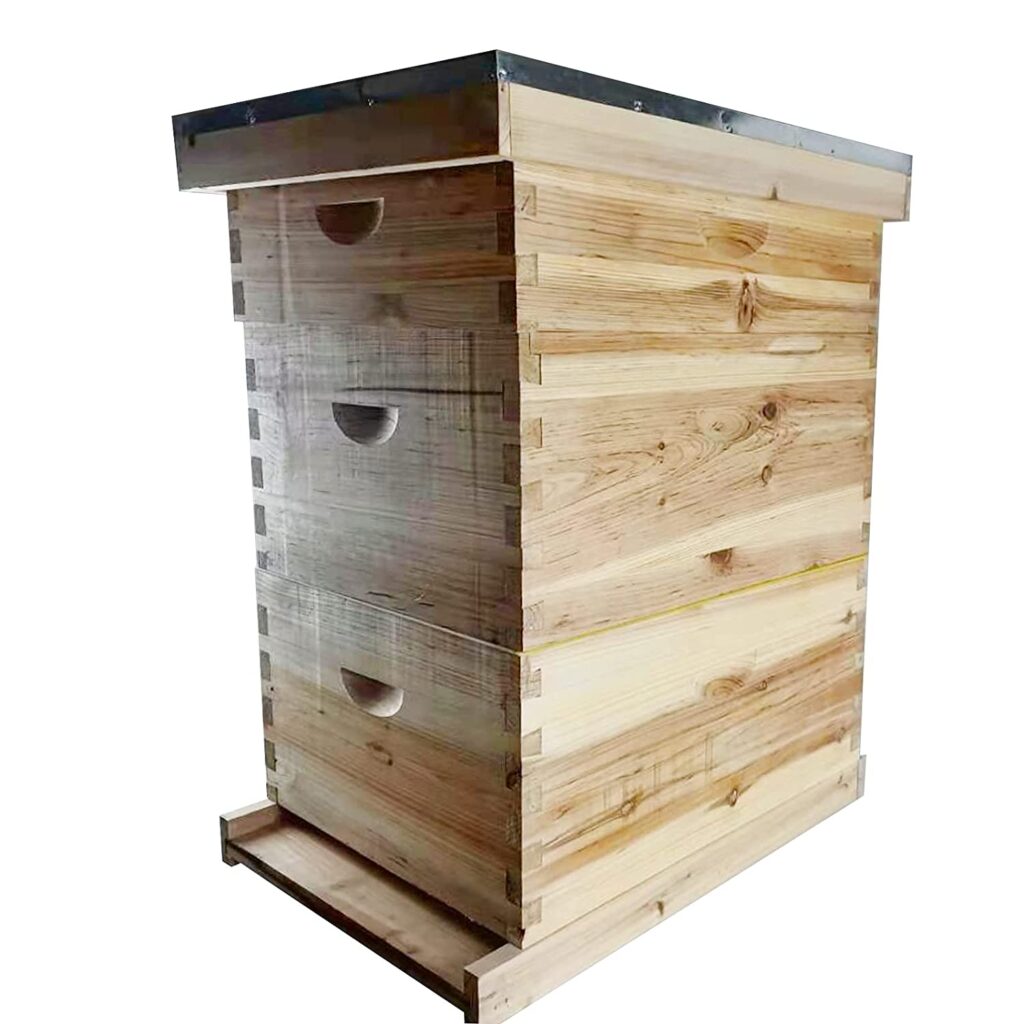Wouldn’t it be delicious to eat honey from your own hives? If you have an decent sized back garden, or access to a roof, you could enjoy bee keeping. Here’s a guide to bee keeping basics, and the equipment you need to set up a hive.
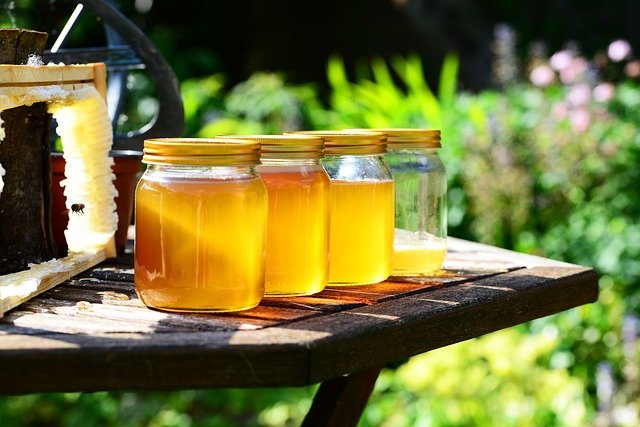
Who can keep bees?
Keeping bees isn’t just for those who live in the country. Bees also do well in cities. The number of hives you have depends on the amount of your outdoor space as well as the closeness of your hives to other people or public rights of way. It’s best to start with one or two hives if you’re new to beekeeping.
Why keep bees?
Bees make honey and beeswax, and only a few well looked after hives will be enough to produce plenty. You can also utilise the honey and wax to make a number of items that you can use or sell for a profit.
Bees are great pollinators, and a hive brings benefits to growing plants in any area.
How to start bee keeping
Spring is the best season to introduce bees to your hive. Bees become more active after the chilly winter months.
Always source been from a reliable supplier, such as local beekeepers, who can be identified through local bee clubs.
A nucleus of bees made up of a young queen who is laying, as well as workers, is usually placed in five brood frames when starting a new hive.
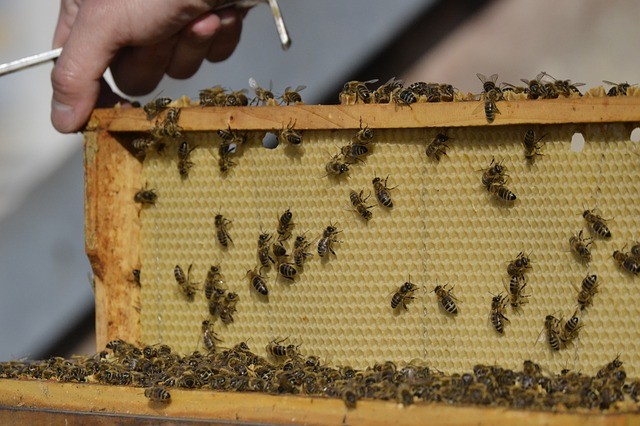
Although bees may not require the same level of daily care as mammals, they do require dedication to maintain a good colony. You will need to inspect your hives on a regular basis to make sure they are healthy.
Because wild bees build their nests in holes in trees, rocks, and buildings, bee hives should also supply everything a natural nest does. That means being dry, safe, and shielded from the elements.
Bee Hive Parts
A bee hive is made up of several parts:
- Brood Box – this is where the bee colony and larvae are raised. They’re the largest of the frames, and they’re also referred to as brood frames. The queen lays her eggs in the brood box, which may include a ‘queen excluder,’ which keeps the queen from depositing her eggs in the super frames.
- Super frames – bees use removable frames to store honey in preparation for the winter. More frames can be added once a frame is full, and the honey can be gathered. Frames can contain a wax comb foundation so that the bees can fill the cells with honey, or they can basically be a frame with the comb made by the bees.
- Outer Lid – this protects the hive from the elements.
- Crown Board – used to attach feeders and usually constructed of ply wood.
- Entrance – the entrance should be precisely the correct size for bees to arrive and exit, as well as defend themselves if necessary.
- Stand – used to elevate the hive’s height to keep it warm in the winter. It also makes working with and handling the hive’s components easier.
To avoid the spread of pests and diseases that could harm your colony, it’s best to use new hives and equipment.
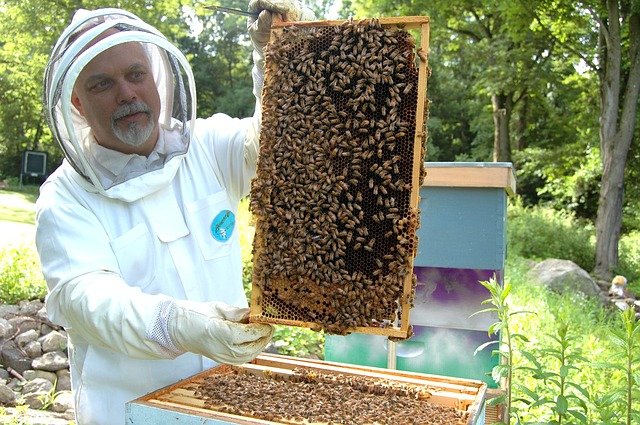
Where Should Beehives Be Placed?
Space – Bee hives should ideally be situated in a sheltered location with ample space around them for easy access. For obvious reasons, having bees near paths where humans frequently walk is not a smart idea.
Bees, on the other hand, thrive in both rural and urban environments. If you wish to keep bees in a busy setting, erect a fence around the hives and face the entrance against a towering object, such as a wall. This ensures the bees fly higher on their trip to and from the hives, rather than at a level where they could be a nuisance.
Water – Because honey must be diluted before bees can eat it, close proximity to a water source is required for a successful colony. Bees will seek for the nearest supply of water they can find, so unless you want them to be buzzing over your garden, keep a little pool nearby, such as a bird bath.
Level Ground – Bee hives should be situated on a flat ground. Because bees build their combs parallel to the ground, sloping ground will result in sloping combs.
Sunshine – It is preferable put your hive in a location that receives early morning sunlight. This is because the hive will be active sooner in the day, and the industrious bees will collect more pollen and produce more honey than a hive that receives sunlight later in the day.
Shelter – Protection from the wind is also important for bee hives. This can be accomplished by facing the entry towards a structure or erecting a windbreak, such as a fence, near the windiest side.

Bee Keeping Equipment
Some specialised equipment is required to safely manage your bees.
- Avoid stings by wearing a bee suit with a mesh veil.
- Gloves keep your hands clean and prevent contamination of the hive.
- When it’s time to open the hive, a smoker will help to quiet the bees.
- Using a hive tool makes moving the frames much easier.
- When moving frames, a bee brush can be used to gently brush away any bees that are in the way.
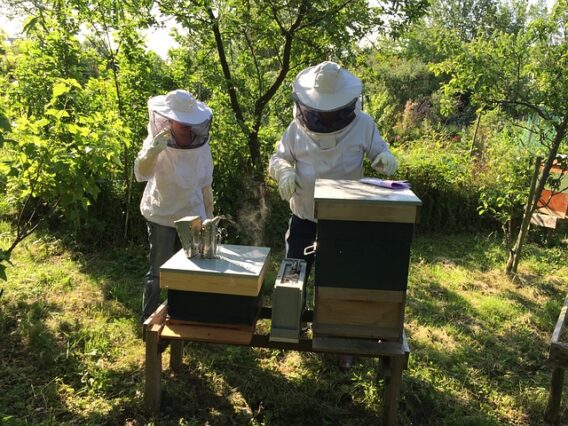
Honey Harvesting
It’s an exciting time when you harvest your first frame of honey! When moving the super frames, the best approach to handle your bees is to keep your actions calm. Your bees may become alarmed if you make large or quick motions. Make sure you’re not wearing any aftershaves or scents, as this may attract the attention of your bees.
Before you open the hive, softly blow smoke around t it with the smoker, and then give it another light puff or two after it’s open. Use the smoker sparingly, as it may alter the flavour of your honey. Remove the super frame and use a bee brush to gently brush away any bees.
Before the honey can be harvested, the waxy caps on each cell must be removed. By gently spinning the honey out of the frame with extraction tools, this procedure can be made easier.
Any remaining contaminants can then be filtered out using cheesecloth. Your honey is now ready to enjoy and store in sterile jars.

Caring for Bees
Honey is the natural food of bees, so make sure you leave plenty for them after you’ve harvested in the autumn. If in doubt, leave some super frames for their reserves.
Check your hive regularly to see the levels of honey. You may need to provide additional food to assist the bees get through the winter.
There are periods of the year when feeding your bees brings can help them. Because the spring flowers fade before the summer flowers bloom, there are natural drops in the amount of pollen available between spring and summer.
During these periods, you can give your bees sugar syrup as a nectar substitute. White sugar is dissolved in hot water to make this. Brown sugars should not be used because they can harm your bees’ health. Allow it to cool before placing it in covered feeders near the brood box for easy access for the bees. Because the syrup has no scent, add a tiny amount of honey from their own colony or from a reliable source to make it more enticing to the bees.

You can feed your bees fondant throughout the winter. Fondant is the delicious icing on cakes, and it’s simple to create at home. The bees will eat directly off a board put in the hive.
Legal Requirements for Bee Keeping
You don’t need any legal authorisation to keep bees in your garden or smallholding, but it’s a good idea to be courteous of nearby neighbours. Bees will sting if they are disturbed, so avoid placing your hives in locations where people frequently stroll.
Bee Hives and Starter Kits
The Sudoo bee hive kit is composed of high-quality natural wood that is anti-corrosion after being baked at a high temperature.
It has 7 food grade comb frames manufactured of food-safe polypropylene.
Auto free flow honey from honey tube, so no mess and easy to clean.
This high-quality hive kit includes a complete and strong bottom board, as well as a roof cover to keep outside elements out of the hive.
You can observe when the honey is ready without opening the beehive because the final frame view is clear.
The bee hive box is designed in a way that keeps your bees safe, with the right temperature and air flow.
A great starter kit for beginner and experienced beekeepers, all you need is the bees!
This 8 frame wooden bee hive is made of fir with an iron sheet covering. The nest structure is made of pine wax.
The honeycomb is made from plastic. It consists of three layers and eight frames.
Made with great craftsmanship, this bee hive is water-resistant, insect-proof, antiseptic, sun-resistant, and made to last.
Natural wax coating protects your hive from the weather, so there’s no need to apply hazardous paint or wood preservatives,
A Buzz from Keeping Bees!
Bee hives will offer you with plenty of honey, as well as the opportunity to sell any excess. Local honey is in high demand since it is more nutritious and tastes better in its raw, unpasteurized form.
Beekeeping is not only good for a smallholding, but it may also be done on a smaller scale in a garden. Honey bees are a threatened species, so well-maintained hives will help to maintain their numbers too.

